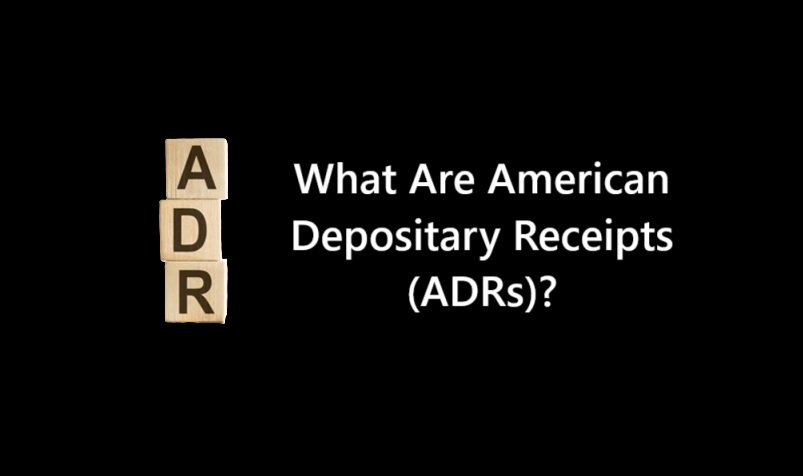
Introduction
American Depositary Receipts (ADRs) are financial instruments that allow U.S. investors to invest in foreign companies without having to purchase shares directly from foreign stock exchanges. ADRs are issued by U.S. depositary banks and represent shares in a foreign company, making them a convenient way for investors to gain exposure to international markets.
ADRs provide a mechanism for foreign companies to access U.S. capital markets while giving American investors the ability to invest in overseas firms without dealing with foreign currency exchanges or regulatory issues.
History of ADRs
Before ADRs were introduced, American investors faced significant challenges in investing in foreign companies. Buying shares of international firms required setting up accounts with foreign brokers, dealing with currency exchanges, and navigating complex foreign regulations.
To resolve this, J.P. Morgan’s predecessor, Guaranty Trust, created the first ADR in 1927 for the British retailer Selfridges. This paved the way for international investments to become more accessible to American investors.
How ADRs Work
ADRs are issued by U.S. banks that purchase foreign company shares and hold them in custody. The bank then issues ADRs, which represent ownership in those foreign shares, allowing them to be traded on U.S. stock exchanges like the New York Stock Exchange (NYSE) or the NASDAQ.
Process of ADR Issuance
- Foreign Company Partners with a Depositary Bank – A foreign company enters into an agreement with a U.S. depositary bank to issue ADRs.
- Shares are Deposited in a Foreign Custodian Bank – The depositary bank buys shares of the foreign company and holds them with a custodian bank in the company’s home country.
- ADRs are Created – The depositary bank issues ADRs, which represent ownership of the foreign shares.
- Trading on U.S. Exchanges – Investors buy and sell ADRs in the U.S. markets just like regular stocks.
- Dividends and Corporate Actions – The foreign company pays dividends in its local currency, which the depositary bank converts into U.S. dollars and distributes to ADR holders.
Types of ADRs
ADRs can be categorized based on their sponsorship and the level of compliance with U.S. regulatory requirements.
Sponsored vs. Unsponsored ADRs
- Sponsored ADRs
- Issued in collaboration with the foreign company.
- Listed on major U.S. exchanges (NYSE, NASDAQ).
- Subject to U.S. Securities and Exchange Commission (SEC) regulations.
- Holders have voting rights similar to regular shareholders.
- Unsponsored ADRs
- Issued without the direct involvement of the foreign company.
- Traded over-the-counter (OTC).
- No voting rights for ADR holders.
- May have multiple depositary banks issuing ADRs for the same company.
ADR Levels
ADRs are classified into three levels based on disclosure requirements and trading status.
- Level I ADRs
- Least regulated and traded OTC.
- Do not require full compliance with SEC regulations.
- Used mainly for establishing a trading presence in the U.S.
- Level II ADRs
- Listed on U.S. stock exchanges.
- Require compliance with SEC reporting regulations.
- Cannot be used to raise capital.
- Level III ADRs
- Fully compliant with SEC regulations.
- Used to raise capital through public offerings in the U.S.
- Provide higher liquidity and visibility in American markets.
Advantages of Investing in ADRs
For U.S. Investors
- Diversification: Access to foreign companies allows for global investment exposure.
- Convenience: ADRs trade in U.S. dollars, eliminating the need for currency conversions.
- Liquidity: ADRs listed on major exchanges are actively traded.
- Regulated Investment: ADRs comply with U.S. securities regulations, providing investor protection.
For Foreign Companies
- Access to U.S. Capital Markets: Foreign firms can raise funds from American investors.
- Increased Market Visibility: Trading in the U.S. improves brand recognition and credibility.
- Expanded Shareholder Base: Companies can attract a broader range of investors.
Risks and Challenges of ADRs
While ADRs offer several advantages, they also come with inherent risks.
- Currency Risk: ADR prices fluctuate with changes in foreign exchange rates.
- Political and Economic Risks: Economic instability or regulatory changes in the foreign company’s home country can affect ADR performance.
- Liquidity Concerns: Some ADRs, especially unsponsored or Level I ADRs, have low trading volumes.
- Dividend Discrepancies: Currency fluctuations can impact dividend payouts, and some ADRs may have tax withholdings.
- Market Reversals: ADRs can be affected by sudden downturns in the global economy.
Tax Implications of ADRs
For U.S. Investors
- Dividend Taxation: ADR dividends are subject to U.S. taxes, but investors may need to pay foreign withholding taxes as well.
- Capital Gains Tax: Profits from selling ADRs are taxed like any other U.S. stock.
- Foreign Tax Credit: Investors can offset foreign taxes paid against their U.S. tax liability.
For Indian Investors
- Dividend Taxation: The U.S. withholds around 25-30% on ADR dividends.
- Capital Gains Tax: Gains from selling ADRs are subject to Indian capital gains tax rates.
- Double Taxation Avoidance Agreement (DTAA): Indian investors can claim a tax credit for taxes paid in the U.S.
Popular ADRs by Market Capitalization
As of 2025, some of the top ADRs in terms of market capitalization include:
Top Indian ADRs
- HDFC Bank ADR – Market cap: $160.39 billion.
- ICICI Bank ADR – Market cap: $111.04 billion.
- Infosys ADR – Market cap: $77.73 billion.
- Wipro ADR – Market cap: $32.88 billion.
- Dr. Reddy’s ADR – Market cap: $11.50 billion.
Global ADRs
- Alibaba Group Holding ADR (China)
- Samsung Electronics ADR (South Korea)
- Toyota Motor Corporation ADR (Japan)
- Tencent Holdings ADR (China)
- BP ADR (UK)
How to Invest in ADRs
- Choose a Brokerage Account: Select a brokerage that offers ADR trading.
- Research ADRs: Analyze company fundamentals, market performance, and risks.
- Monitor Exchange Rates: Since ADRs involve foreign stocks, currency fluctuations can impact returns.
- Diversify Portfolio: Invest in ADRs across different countries and industries to mitigate risks.
- Consider Tax Implications: Understand the tax treatment of ADR dividends and capital gains in your country.
Conclusion
ADRs provide an excellent way for U.S. investors to diversify their portfolios by investing in foreign companies without the complexities of direct international stock trading. While they offer numerous advantages, such as ease of trading and regulatory oversight, investors must be mindful of currency risks, political factors, and liquidity issues. By conducting thorough research and understanding tax implications, investors can effectively leverage ADRs to access global markets.







